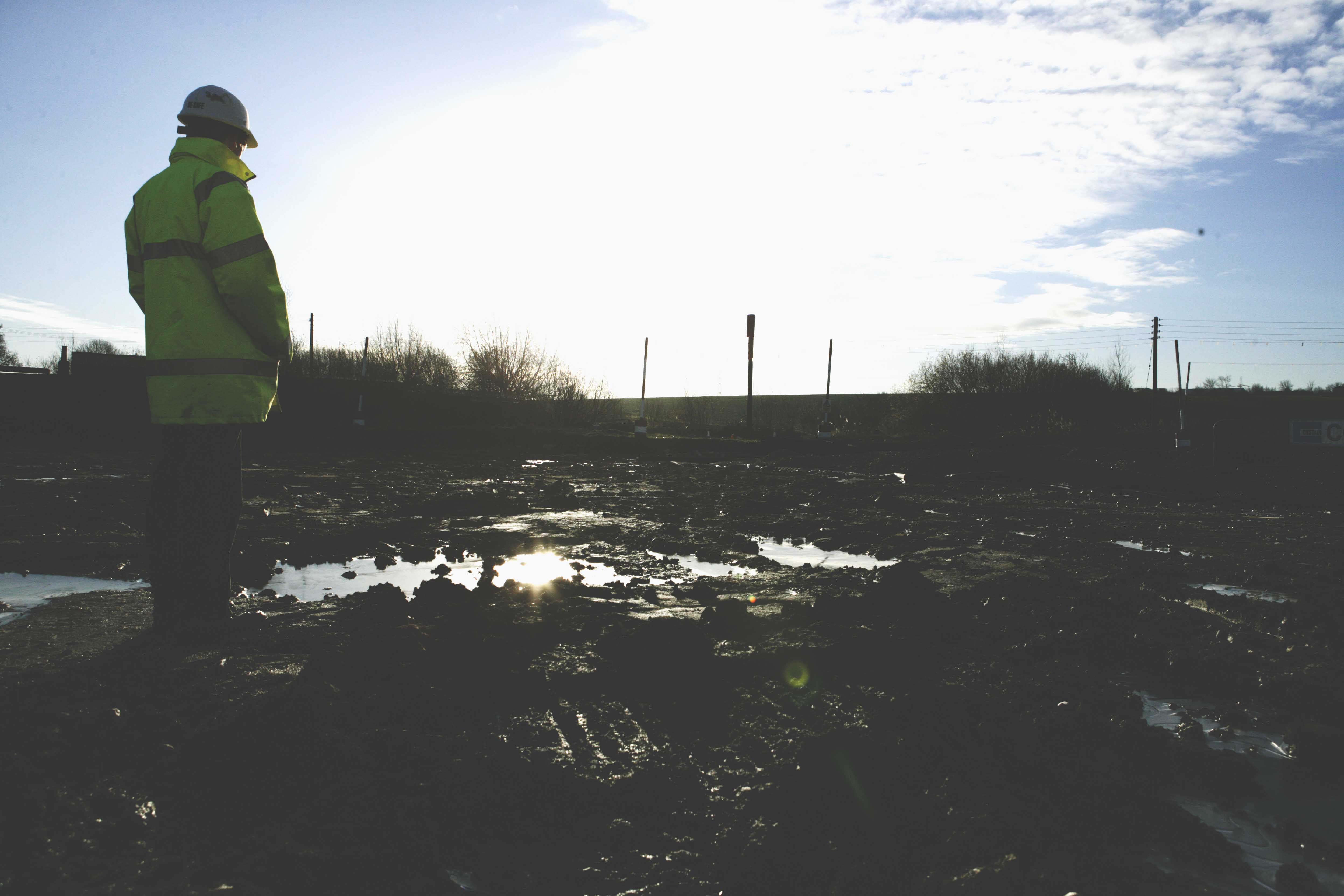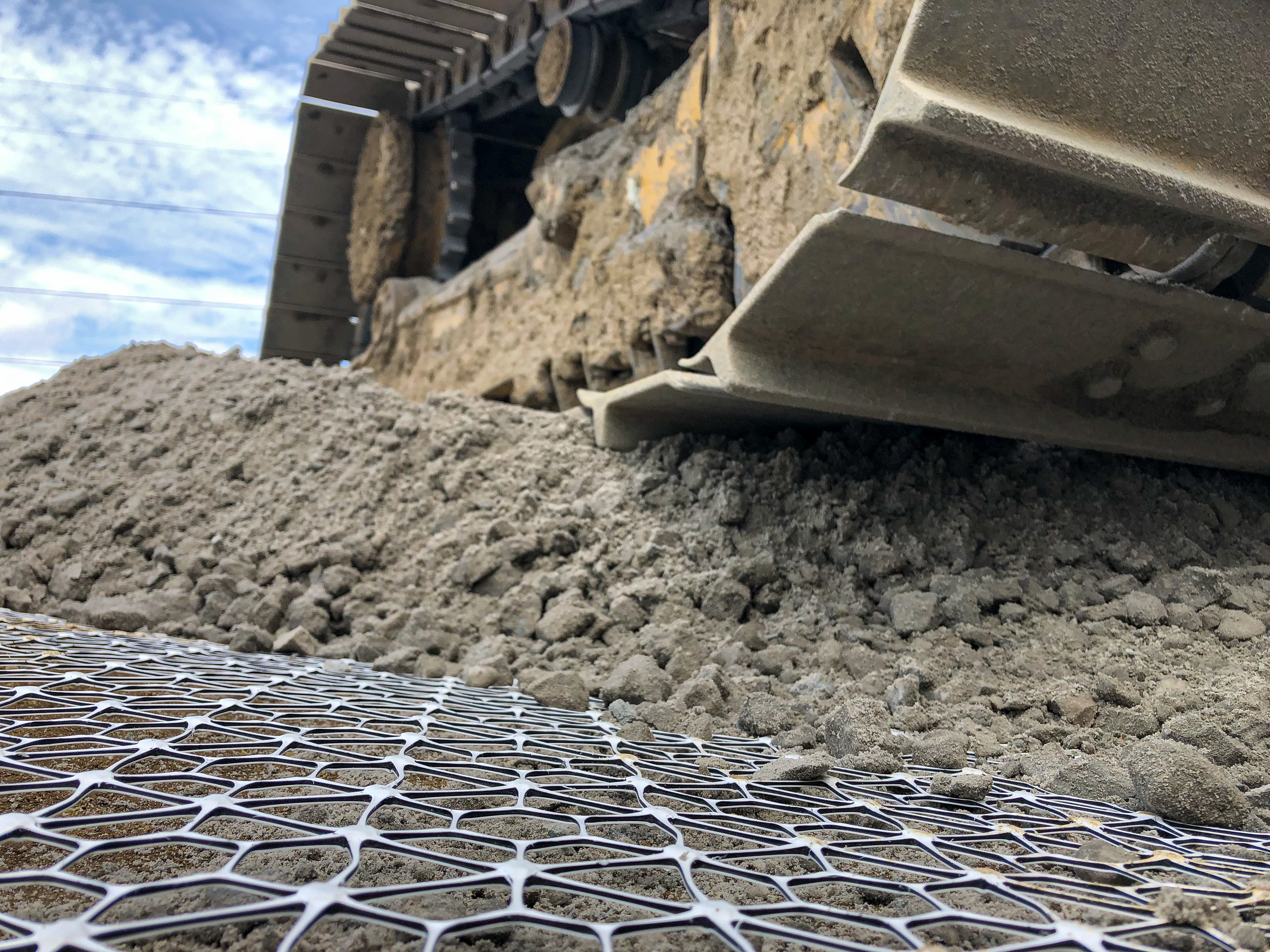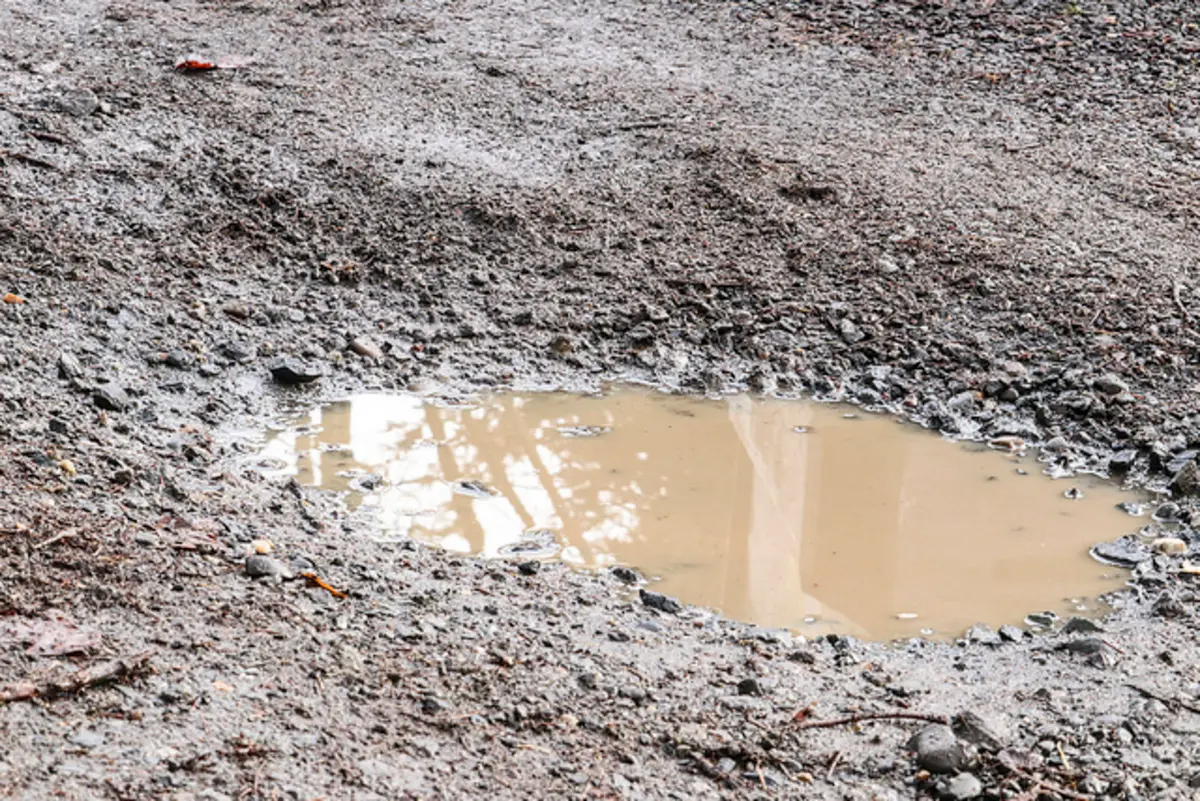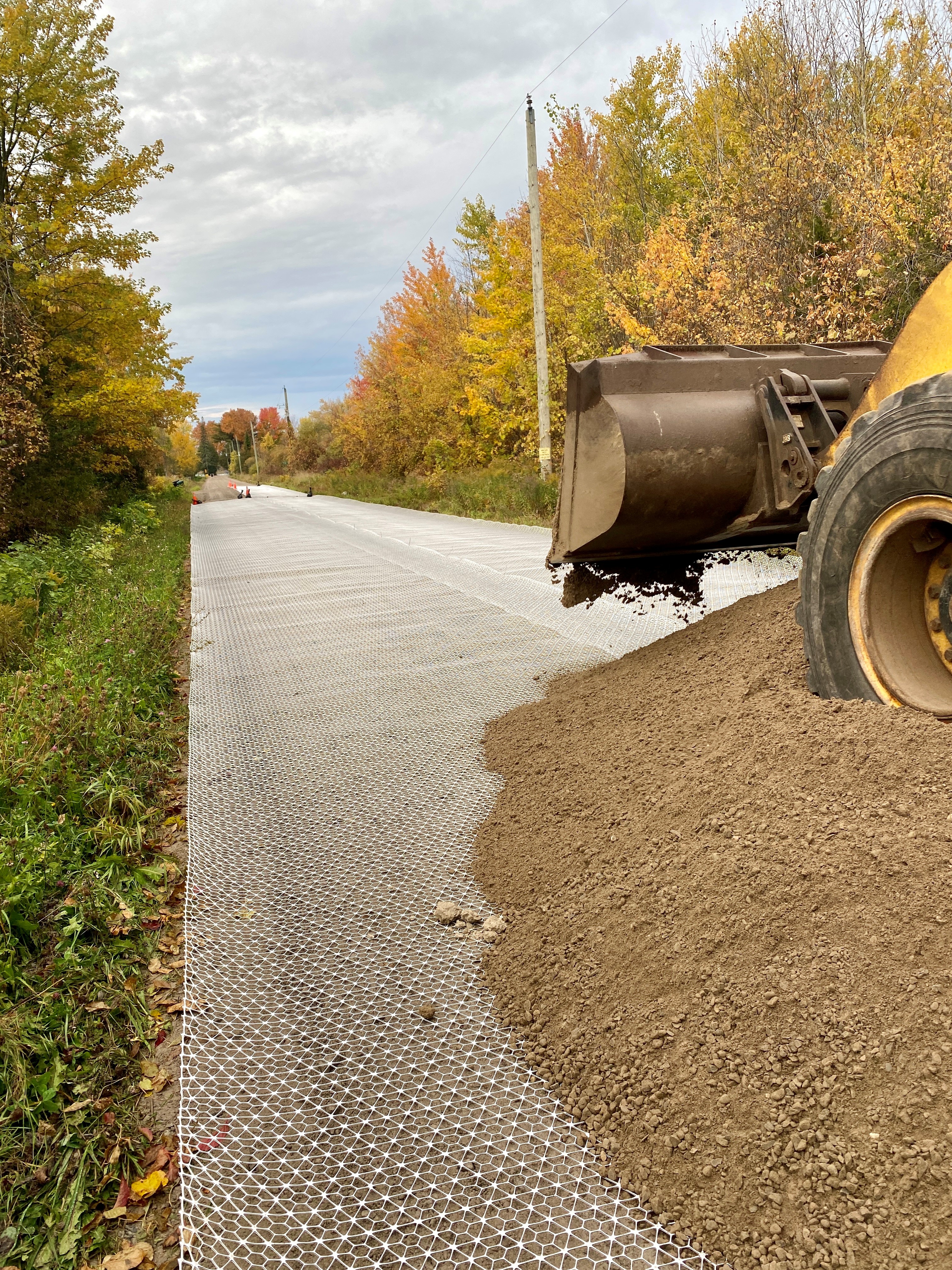Avoid Site Delays Caused by Spring Thaw with Geogrid Technology
by Matt Tudor, on February 26, 2025
 As temperatures rise and the ground thaws, site development contractors face a significant challenge: wet, mucky soil conditions. In cold regions, the ground may be solid during winter, but once the thaw begins, the soil can become unstable, leading to rutting and sinking heavy equipment. This creates delays, added costs, and an overall inefficient project site. The good news is, contractors can take one proven, proactive step to prevent these issues and maintain stable work surfaces throughout the thaw – Tensar geogrid.
As temperatures rise and the ground thaws, site development contractors face a significant challenge: wet, mucky soil conditions. In cold regions, the ground may be solid during winter, but once the thaw begins, the soil can become unstable, leading to rutting and sinking heavy equipment. This creates delays, added costs, and an overall inefficient project site. The good news is, contractors can take one proven, proactive step to prevent these issues and maintain stable work surfaces throughout the thaw – Tensar geogrid.By incorporating Tensar geogrid during the early stages of the construction, contractors can stabilize the soil now to avoid future delays. This all-weather solution can withstand cold, wet environments so projects stay on track as the ground begins to thaw.
Understanding the Problem: Why Soils Become Soft After Thawing
In colder climates, the ground freezes during winter, compacting and solidifying the soil. However, when the weather warms up, the frozen moisture within the soil begins to thaw, and the soil structure becomes weakened. Heavy machinery, traffic, and construction activities can exacerbate this by causing rutting, which damages the surface, increases downtime, and can even lead to costly repairs.
These thawing and softening soils are particularly problematic for contractors who are utilizing temporary work surfaces like access roads and staging areas. Without proper support, these surfaces can become impassable or create uneven working conditions, forcing job sites to stall while a solution is found —an issue that delays projects and inflates costs.
Why Use Tensar Geogrid?
 Tensar geogrids offer proven solutions for stabilizing soils in challenging conditions, including thawing and soft soils. The geogrids come in a range of options, like the highest performing InterAx, and are engineered to stabilize the ground and improve load distribution. Here’s a brief overview of how they work:
Tensar geogrids offer proven solutions for stabilizing soils in challenging conditions, including thawing and soft soils. The geogrids come in a range of options, like the highest performing InterAx, and are engineered to stabilize the ground and improve load distribution. Here’s a brief overview of how they work:A geogrid has openings, or apertures, that allow granular materials to strike through and interlock. This interlock confines the granular particles to keep them from spreading laterally. When placed in the soft soil layer, the geogrid distributes the applied loads and increases bearing capacity. This mechanically stabilized layer will prevent rutting, all without the need for extensive soil removal or chemical soil treatment.
Advantages of Tensar Geogrid Soil Stabilization:
- Not Restricted by Weather Conditions: Chemical stabilization like lime or cement, aren’t ideal during this season since they have specific temperature and moisture requirements and lengthy curing times. Tensar geogrid can be installed in both rainy and cold climates.
- Fast Installation: The geogrid is simply rolled out with a specified aggregate layer placed on top. The site is immediately accessible once the geogrid is installed. Other methods like over-excavation and replacement of the soil is more labor intensive and adds on additional time to the schedule.
- Time and Cost Savings: The geogrid helps to improve the load-bearing capacity of the surface, allowing it to withstand the repeated loads of construction equipment. Contractors won’t need to repeatedly repair damaged surfaces, and work can continue smoothly through the spring and beyond without interruptions due to soft soil issues.
Location: Ontario, Canada
 The Challenge: A specific section of Tent Hills 13th Line East was always soft and wet when the frost came out of the ground. But this particular year, there was an added problem of beavers. Beavers built a dam on the adjacent property causing the area to flood. The high-water level combined with the spring thaw caused the road to blow apart. Local residents, buses and garbage trucks were practically blocked from passing through this section of road.
The Challenge: A specific section of Tent Hills 13th Line East was always soft and wet when the frost came out of the ground. But this particular year, there was an added problem of beavers. Beavers built a dam on the adjacent property causing the area to flood. The high-water level combined with the spring thaw caused the road to blow apart. Local residents, buses and garbage trucks were practically blocked from passing through this section of road. Tensar Solution: At the request of the Municipal Roads Supervisor, Tensar visited the site and carried out Dynamic Cone Penetrometer (DCP) testing to assess the soil strength. A recommendation was made to use InterAx NX850 with 200 mm of fresh gravel. The owner was able to rebuild this section of road adding structure to bridge over the underlying soft soils without excavating deeper and building a thicker section. They saved 45% in cost, 70% in construction time and 61% in carbon use. Although the beaver dam was removed, this road is ready to handle them if they ever return.
Tensar Solution: At the request of the Municipal Roads Supervisor, Tensar visited the site and carried out Dynamic Cone Penetrometer (DCP) testing to assess the soil strength. A recommendation was made to use InterAx NX850 with 200 mm of fresh gravel. The owner was able to rebuild this section of road adding structure to bridge over the underlying soft soils without excavating deeper and building a thicker section. They saved 45% in cost, 70% in construction time and 61% in carbon use. Although the beaver dam was removed, this road is ready to handle them if they ever return.Conclusion
As the thaw sets in and the ground softens, contractors must be proactive in managing soil stability. By incorporating geogrid into your site development plan now, you can ensure a smoother, more efficient construction process throughout the spring thawing season. Don't wait for the soft soil conditions to cause costly delays—take action today and stabilize your site with Tensar geogrid. It’s the smart investment that helps contractors stay on schedule and under budget.
 Visit our website and get your sample of InterAx geogrid. See first-hand how this proven technology can benefit your project.
Visit our website and get your sample of InterAx geogrid. See first-hand how this proven technology can benefit your project. 



